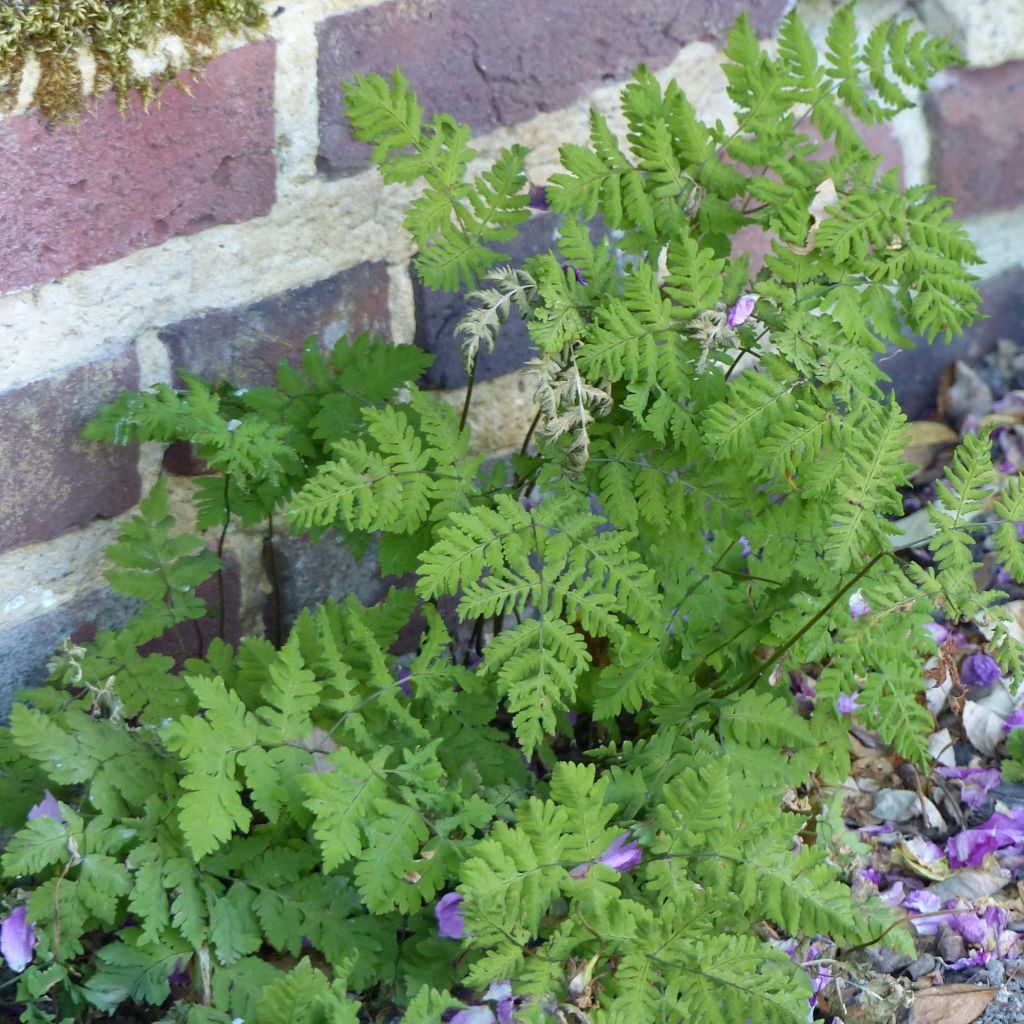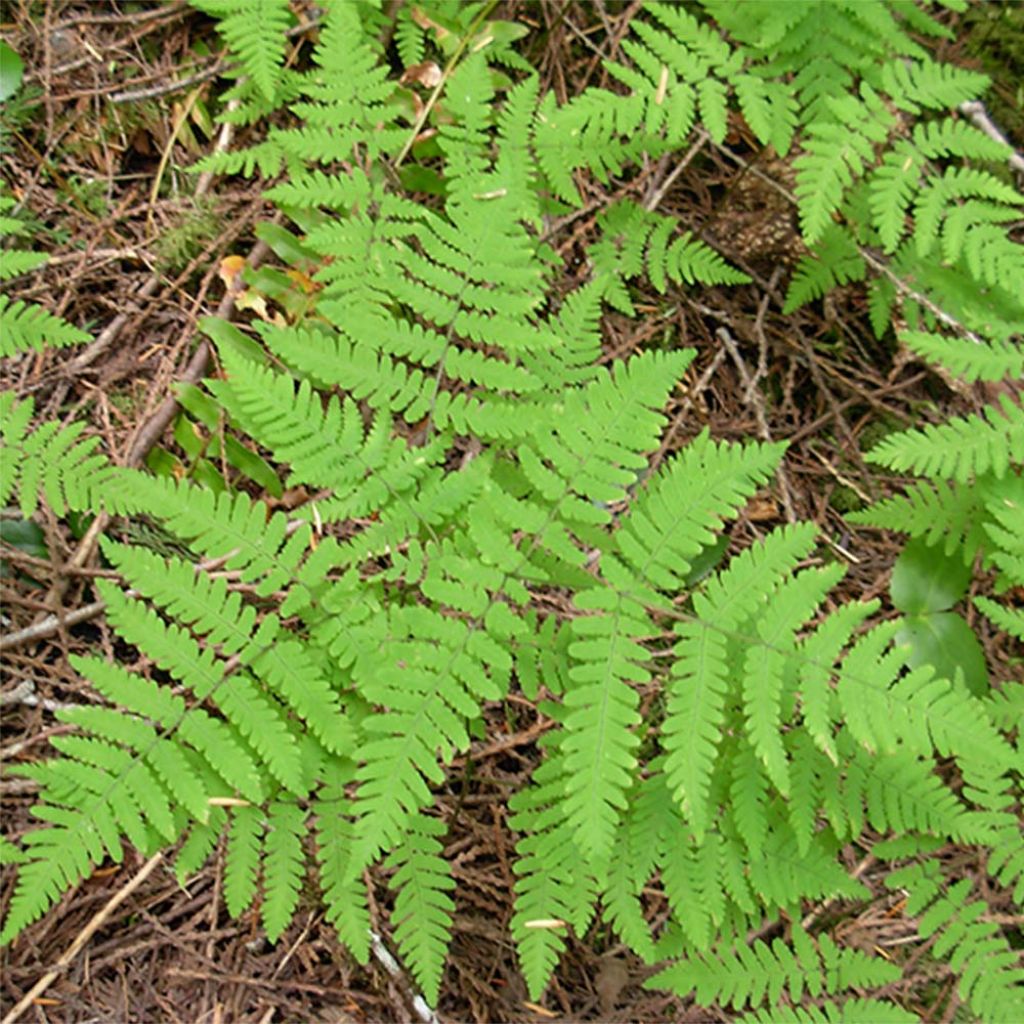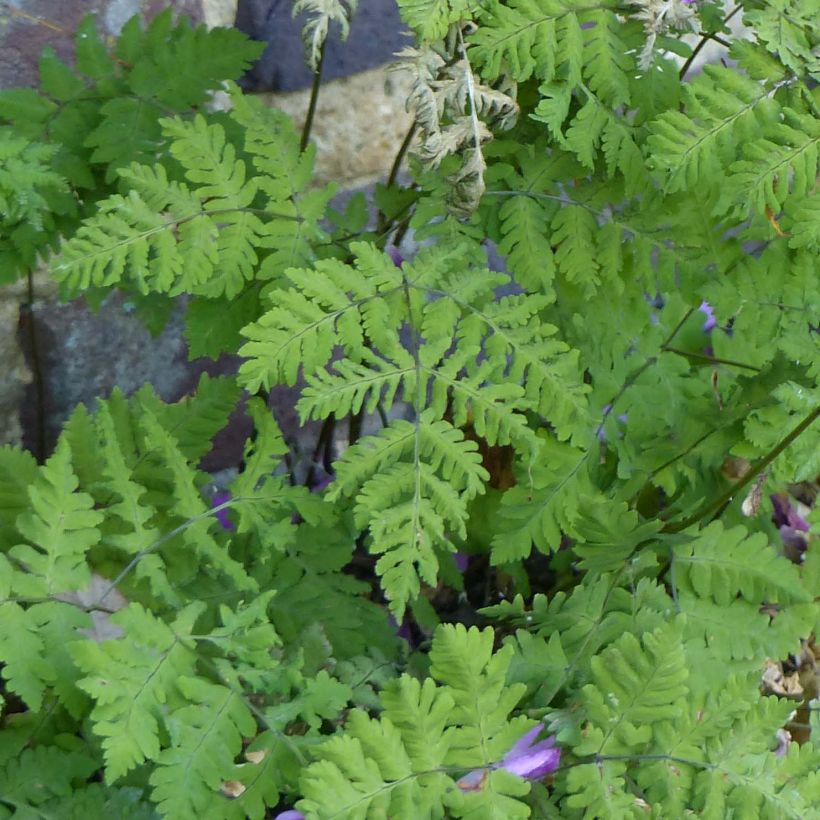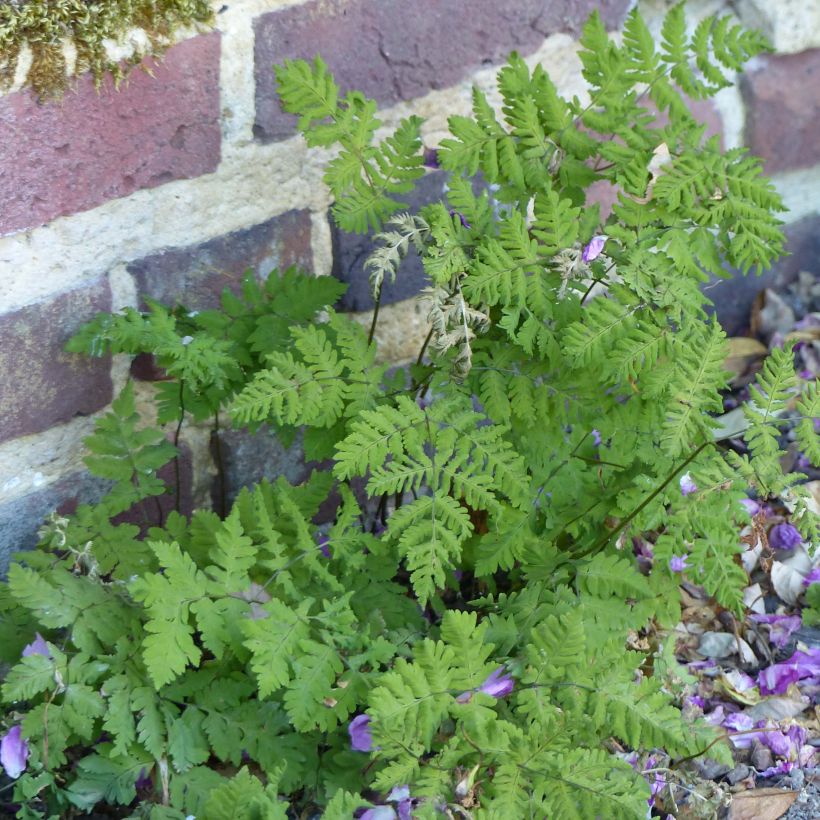

Gymnocarpium dryopteris


Gymnocarpium dryopteris
Gymnocarpium dryopteris
Gymnocarpium dryopteris
Common oak fern, Western oak fern
This plant carries a 12 months recovery warranty
More information
We guarantee the quality of our plants for a full growing cycle, and will replace at our expense any plant that fails to recover under normal climatic and planting conditions.
From €5.90 for pickup delivery and €6.90 for home delivery
Express home delivery from €8.90.
Does this plant fit my garden?
Set up your Plantfit profile →
Description
Gymnocarpium dryopteris is a very pretty little ground cover fern, better known as the oak fern or Polypode dryopteris. It is found in high-altitude undergrowth, where it often grows in cool and shady environments, in soil rich in humus and sand. It is delightful to see its lovely sprouts of spring green velvet fronds emerge from the ground at the end of winter, becoming more numerous each year. Its vigorous and wandering rhizome allows it to gradually colonise the soil without becoming uncontrollable. Perfect for bringing a little light under trees, this small botanical fern is easy to acclimatise in our gardens when the conditions are right. It is perfect in a naturalistic-inspired ensemble.
Gymnocarpium dryopteris is a deciduous fern belonging to the Woodsiaceae family. It is native to Europe, Asia, and northern America. It is a rather mountainous botanical species, preferring non-calcareous moist to wet soil. It is found in the Pyrenees, the Alps, the Ardennes, and Corsica, for example. Its natural habitat consists of shady and humid oak and wall undergrowth. It can also, but more rarely, be found in limestone soils covered with humus, which is therefore acidic. This perennial spreads with its creeping rhizome.
This very hardy fern grows in spring and remains dormant underground in winter. Its elongated and slender rhizome, equipped with fine roots, gives rise to strongly triangular fronds in March, ranging from 7 to 20cm (3 to 8in) in length. They are soft and smooth to the touch, carried by a slightly scaly long petiole, on average 30cm (12in) above the ground. The petiole is longer than the lamina, which is successively divided twice into crenate lobes. The colour of the leaves is a very tender green, which is bright in the shade. Capable of spreading on the ground for several metres, its growth rate is quite rapid. The plant produces sori (small sacs containing spores) arranged in two parallel lines along the median vein of the lobes, resembling small brown warts.
This little fern forms a delightful ground cover where it thrives. It brings a touch of lushness to shaded and humid areas of the garden, which are not always easy to landscape. Its magnificent tender green foliage is superb next to mossy stones. In filtered light or shade, it can be planted with lungworts, variegated ivy (Hedera helix 'Variegata'), helxine, and hostas. It can also be adopted in a Japanese-inspired garden, by combining it with hakone grass and a Japanese painted fern (Athyrium niponicum 'Pictum').
Report an error about the product description
Gymnocarpium dryopteris in pictures




Foliage
Plant habit
Botanical data
Gymnocarpium
dryopteris
Woodsiaceae
Common oak fern, Western oak fern
Western Europe
Planting and care
Gymnocarpum dryopteris is a fern for cool to wet areas, appreciating light, well-drained, non-calcareous soils, rich in sand and leaf compost (humus). Like many ferns, it enjoys dappled sunlight, partial shade, or even full shade. It will particularly thrive on the edge of a grove or understory, in a shady rockery, facing east or north. It grows vigorously when its happy, and requires little maintenance. To limit its spread, remove any rhizomes that you find a bit too wandering.
Planting period
Intended location
Care
This item has not been reviewed yet - be the first to leave a review about it.
Haven't found what you were looking for?
Hardiness is the lowest winter temperature a plant can endure without suffering serious damage or even dying. However, hardiness is affected by location (a sheltered area, such as a patio), protection (winter cover) and soil type (hardiness is improved by well-drained soil).

Photo Sharing Terms & Conditions
In order to encourage gardeners to interact and share their experiences, Promesse de fleurs offers various media enabling content to be uploaded onto its Site - in particular via the ‘Photo sharing’ module.
The User agrees to refrain from:
- Posting any content that is illegal, prejudicial, insulting, racist, inciteful to hatred, revisionist, contrary to public decency, that infringes on privacy or on the privacy rights of third parties, in particular the publicity rights of persons and goods, intellectual property rights, or the right to privacy.
- Submitting content on behalf of a third party;
- Impersonate the identity of a third party and/or publish any personal information about a third party;
In general, the User undertakes to refrain from any unethical behaviour.
All Content (in particular text, comments, files, images, photos, videos, creative works, etc.), which may be subject to property or intellectual property rights, image or other private rights, shall remain the property of the User, subject to the limited rights granted by the terms of the licence granted by Promesse de fleurs as stated below. Users are at liberty to publish or not to publish such Content on the Site, notably via the ‘Photo Sharing’ facility, and accept that this Content shall be made public and freely accessible, notably on the Internet.
Users further acknowledge, undertake to have ,and guarantee that they hold all necessary rights and permissions to publish such material on the Site, in particular with regard to the legislation in force pertaining to any privacy, property, intellectual property, image, or contractual rights, or rights of any other nature. By publishing such Content on the Site, Users acknowledge accepting full liability as publishers of the Content within the meaning of the law, and grant Promesse de fleurs, free of charge, an inclusive, worldwide licence for the said Content for the entire duration of its publication, including all reproduction, representation, up/downloading, displaying, performing, transmission, and storage rights.
Users also grant permission for their name to be linked to the Content and accept that this link may not always be made available.
By engaging in posting material, Users consent to their Content becoming automatically accessible on the Internet, in particular on other sites and/or blogs and/or web pages of the Promesse de fleurs site, including in particular social pages and the Promesse de fleurs catalogue.
Users may secure the removal of entrusted content free of charge by issuing a simple request via our contact form.
The flowering period indicated on our website applies to countries and regions located in USDA zone 8 (France, the United Kingdom, Ireland, the Netherlands, etc.)
It will vary according to where you live:
- In zones 9 to 10 (Italy, Spain, Greece, etc.), flowering will occur about 2 to 4 weeks earlier.
- In zones 6 to 7 (Germany, Poland, Slovenia, and lower mountainous regions), flowering will be delayed by 2 to 3 weeks.
- In zone 5 (Central Europe, Scandinavia), blooming will be delayed by 3 to 5 weeks.
In temperate climates, pruning of spring-flowering shrubs (forsythia, spireas, etc.) should be done just after flowering.
Pruning of summer-flowering shrubs (Indian Lilac, Perovskia, etc.) can be done in winter or spring.
In cold regions as well as with frost-sensitive plants, avoid pruning too early when severe frosts may still occur.
The planting period indicated on our website applies to countries and regions located in USDA zone 8 (France, United Kingdom, Ireland, Netherlands).
It will vary according to where you live:
- In Mediterranean zones (Marseille, Madrid, Milan, etc.), autumn and winter are the best planting periods.
- In continental zones (Strasbourg, Munich, Vienna, etc.), delay planting by 2 to 3 weeks in spring and bring it forward by 2 to 4 weeks in autumn.
- In mountainous regions (the Alps, Pyrenees, Carpathians, etc.), it is best to plant in late spring (May-June) or late summer (August-September).
The harvesting period indicated on our website applies to countries and regions in USDA zone 8 (France, England, Ireland, the Netherlands).
In colder areas (Scandinavia, Poland, Austria...) fruit and vegetable harvests are likely to be delayed by 3-4 weeks.
In warmer areas (Italy, Spain, Greece, etc.), harvesting will probably take place earlier, depending on weather conditions.
The sowing periods indicated on our website apply to countries and regions within USDA Zone 8 (France, UK, Ireland, Netherlands).
In colder areas (Scandinavia, Poland, Austria...), delay any outdoor sowing by 3-4 weeks, or sow under glass.
In warmer climes (Italy, Spain, Greece, etc.), bring outdoor sowing forward by a few weeks.




































